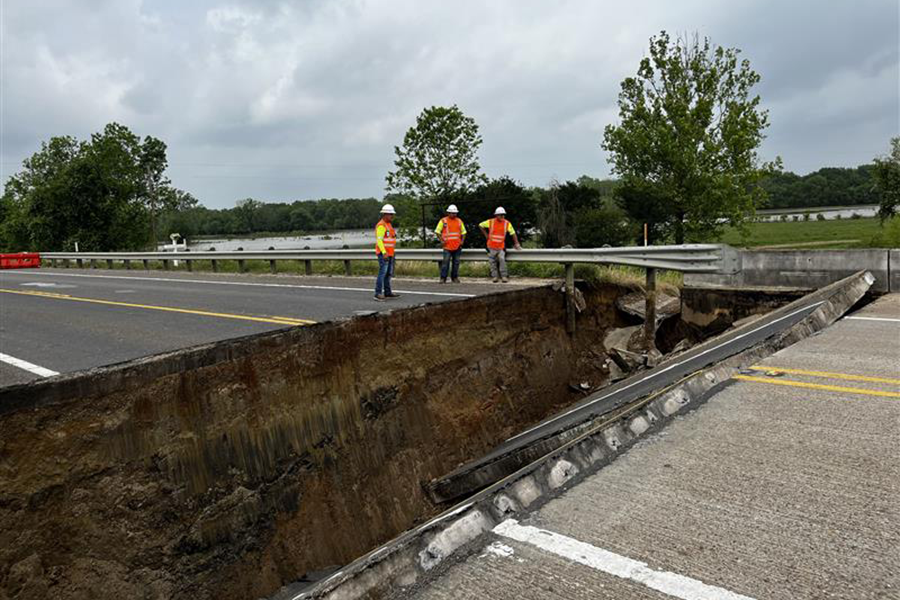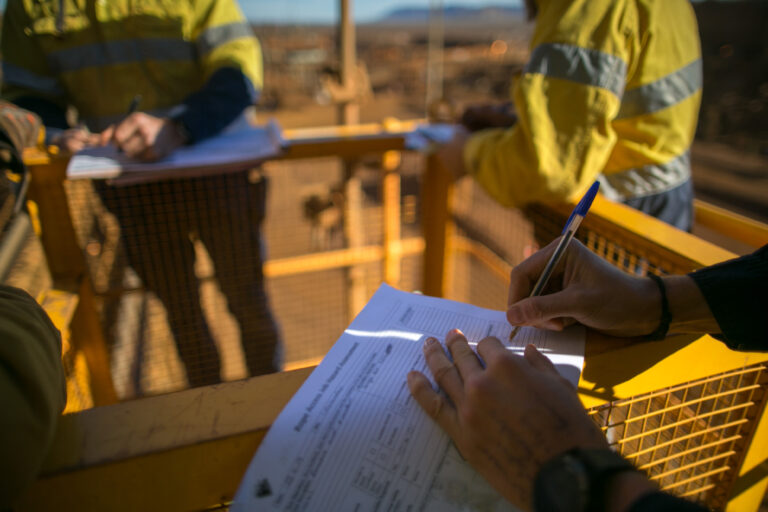
AUSTIN — Throughout severe weather, heavy rain and flooding over the past several weeks, TxDOT crews were out in force helping drivers stay safe before and after the storms.
Storms have hit Texas hard this spring affecting communities throughout the state, especially in Central and East Texas. The rain inundated areas already soaked with water causing flooding and damaging roadways. Tornadoes and strong winds struck Houston causing widespread power outages. This most recent storm in Houston led to TxDOT mobilizing crews from across the state to help with recovery efforts.
“Our crews are working diligently to restore our traffic signals and efforts to recover to normal operations across the Houston District, including Harris, Montgomery, Fort Bend, and Waller counties. To expedite restoration TxDOT is leveraging our forces to get our system up and operating,” said Eliza Paul, District Engineer, TxDOT Houston District in a news release on May 19.
Thanks to crews from Houston and multiple parts of the state, TxDOT was able to clear debris and help repair and restore power to more than 100 traffic signals.
As the Houston area recovers, so do other areas hit by recent flooding. Over the past several weeks, TxDOT crews in multiple parts of the state monitored roads, cleared debris, repaired damages and helped keep drivers safe.
“It’s been a long couple weeks for communities impacted by these storms,” TxDOT Emergency Management Coordinator Matthew Heinze said. “We are here to help in any way we can, and our crews out there work hard to help ensure roads are clear and safe to drive.”
TxDOT works closely with its state partners in response to storms, including the Texas Department of Emergency Management. If you have personal home or property damage, please report it by sending an email to damage.tdem.texas.gov/.
Statewide between May 1-21, there were 736 roads closed due to flooding and 135 locations had flood-related damages. Current conditions can be found at drivetexas.org.
The flooding washed out or collapsed complete sections of roadways in some areas. When that happens crews quickly work with state partners to close the road and let everyone know as soon as possible. TxDOT then coordinates a detour and works on repairs.
While there were no major damages to bridges, TxDOT closely monitored bridge conditions and roadways across the state. This included monitoring SH 6 and SH OSR along the Navasota River as the water rose to record highs near the roadway.
It’s extremely important that drivers never go around barricades, and instead, turn around, don’t drown. It’s also important to know that any bridge that’s opened to traffic is safe.
Here is some other work done throughout the state:
- Cleared debris in drains before the storm which helps provide relief during heavy rain events.
- Monitored road conditions, looking out for flooding and damages.
- Removed debris over the road.
- Inspected road damages and worked on current and long-term repairs. In some areas crews have repaired all flood-related road damages.
- Restored power to and repaired damaged traffic signals.
- Provide real-time updates to drivetexas.org to help keep Texans informed.
TxDOT prepares all year long for events like these, and crews are ready to respond. When water rose and began to flood roadways, TxDOT was ready with traffic control measures and kept the public informed about closures and alternate routes.
Source: TxDOT







